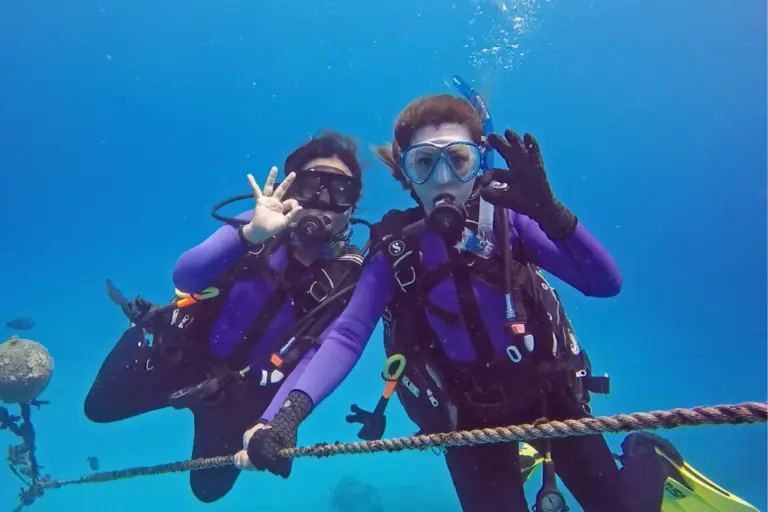What Do You Wear Under a Wetsuit? Ultimate Guide
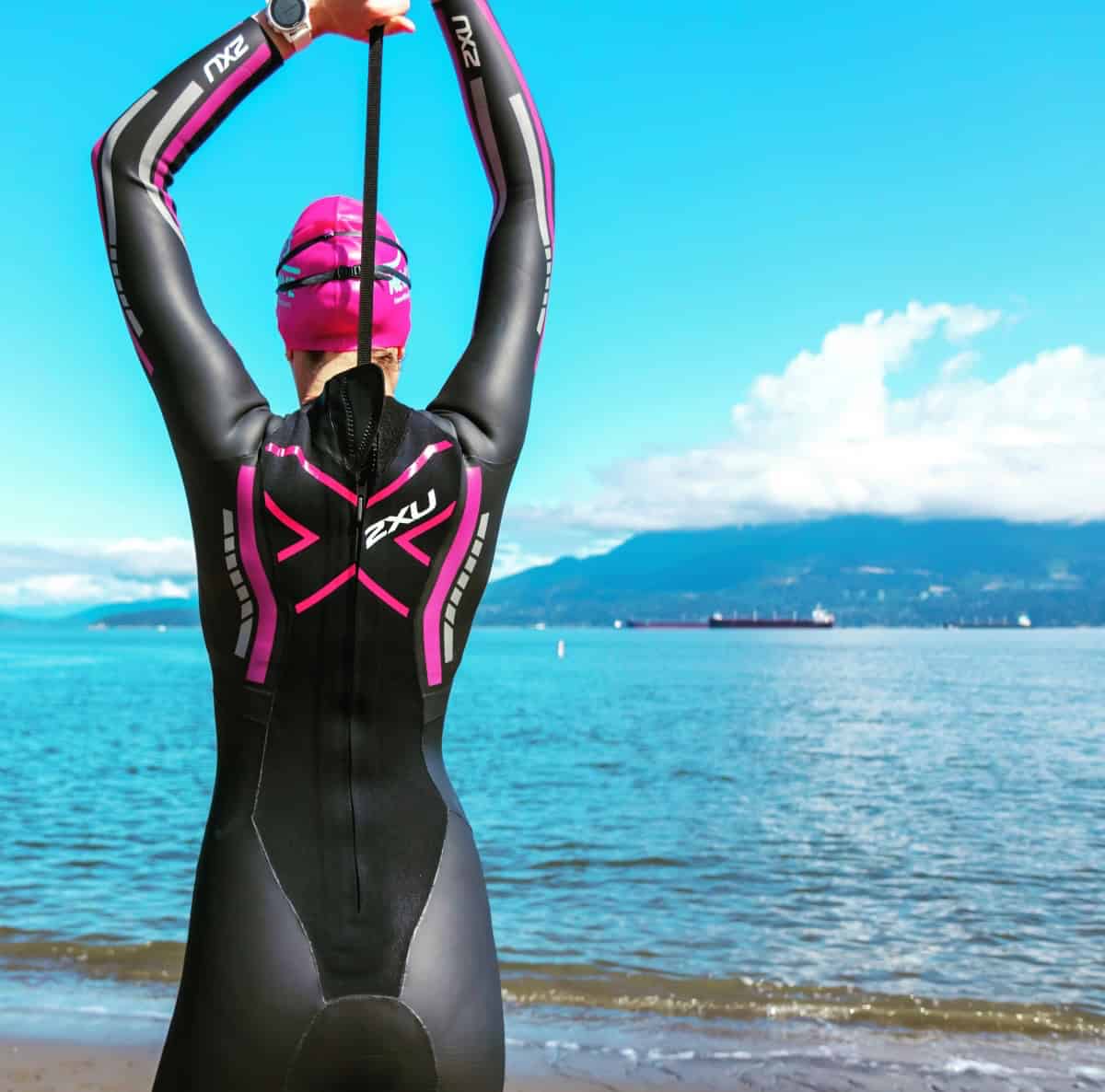

What do you wear under a wetsuit? It’s a question every water adventurer asks at some point and it doesn’t matter whether you’re a first-time snorkeler, surfer, or a seasoned scuba diver. The answer isn’t as straightforward as you might think—it depends on the activity, the water temperature, and, let’s be honest, how comfortable you want to feel when you’re wedged into your neoprene cocoon.
If you’re not sure whether to don swimwear, thermals, or go commando (yes, that’s a thing), you’ve come to the right place.
After years of zipping into wetsuits, mainly for scuba diving and freediving, I’ve learned something about what works—and what absolutely doesn’t. This guide will walk you through every option, helping you make the best choice for comfort, performance, and a little extra style under the surface. Let’s dive straight in!
What to Wear Under a Wetsuit (Men vs. Women)
Let’s break it down for both men and women because the options vary slightly based on your needs.
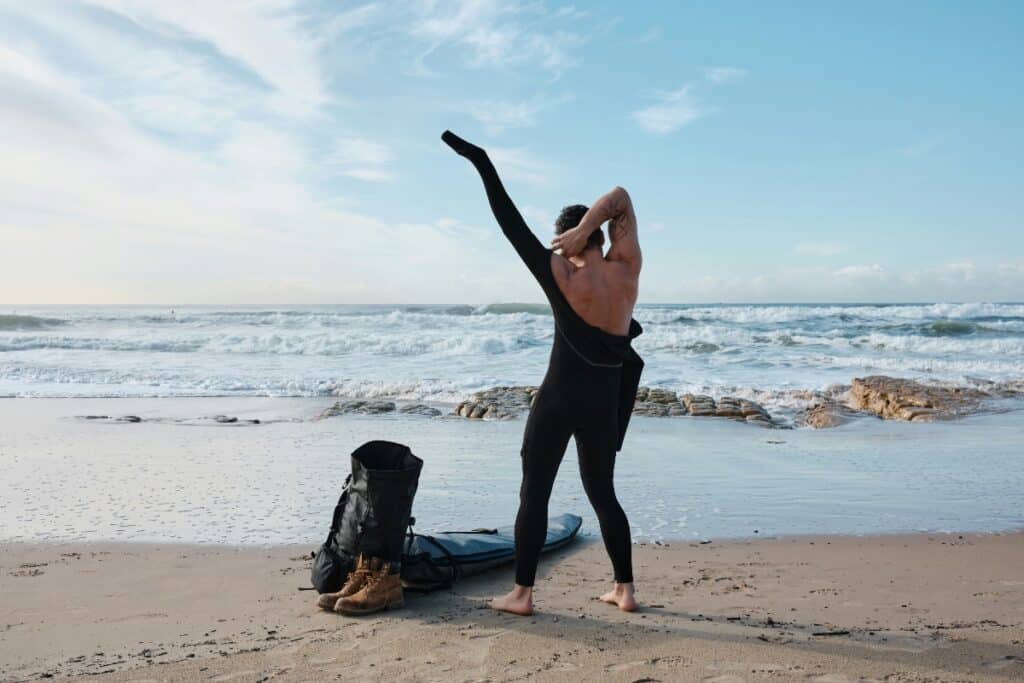
For Men:
👉 Swimwear (Briefs, Boxers, or Board Shorts)
Swimwear is the gold standard for wetsuit underlayers. Snug-fitting trunks, briefs, or boxers are your best bet to avoid fabric bunching (because who wants to deal with wedgies underwater?).
Board shorts can work, too, but unless they’re tight-fitting, you might end up feeling like you’re smuggling balloons in your wetsuit. Stick to quick-dry materials so you’re not waddling around in soggy fabric post-dive.
👉 Rash Guards and Compression Tops
Rash guards and compression tops are like the superheroes of underlayers—they protect you from chafing, sunburn (when your wetsuit’s unzipped), and that awkward chest hair snag (you know who you are).
Compression tops also give your muscles a little extra support, which is great if your water adventures leave you feeling like you’ve wrestled a sea lion. Look for flat seams to avoid irritation because comfort is king, even underwater.
👉 Neoprene Shorts or Pants
If you’re braving colder waters, neoprene shorts or pants are your best friend. They add insulation, prevent the wetsuit from awkwardly suctioning to your skin, and make slipping into your wetsuit much easier (because, let’s face it, nobody looks graceful doing the wetsuit shimmy). Plus, they keep things warm in areas where the water is just a little too refreshing.
👉 Going Commando (Pros and Cons)
Ah, the commando life. Some swear by the ultimate freedom of going au naturel under a wetsuit. Sure, it can feel streamlined, but if you’re renting your wetsuit, think about the “shared experience” factor (yikes).
Even with your own wetsuit, there’s the cleanup situation—you’ll be rinsing out more than just seawater. Let’s just say going commando is a bold choice, not for the faint of heart or germophobes.
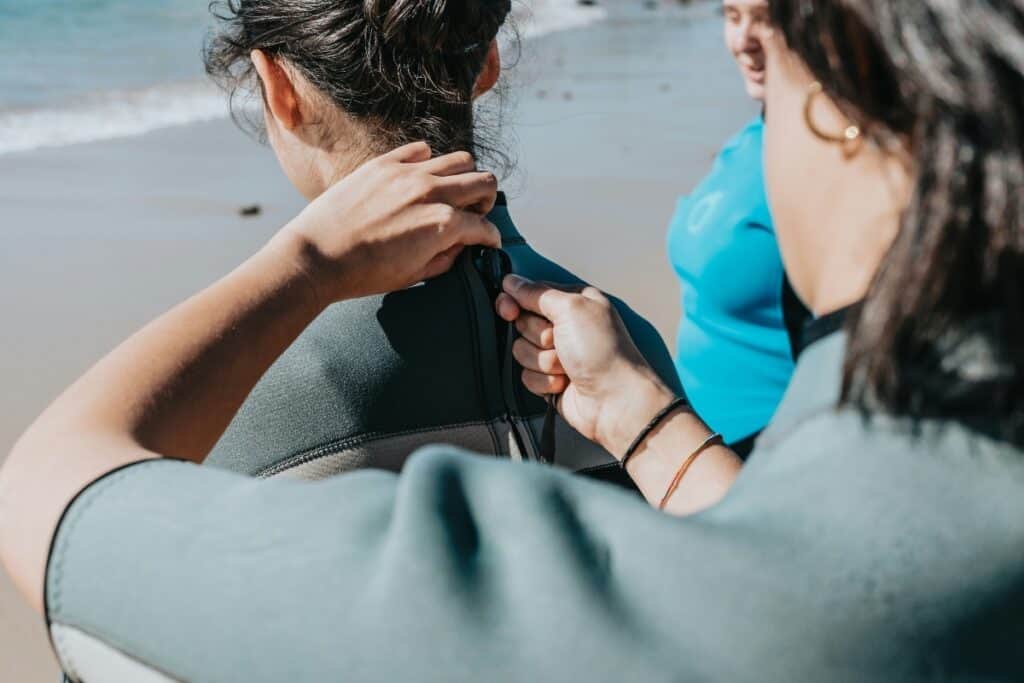
For Women:
👉 Bikinis and One-Piece Swimsuits
Simplicity is key when it comes to bikinis and one-piece swimsuits under your wetsuit. Avoid anything with ties, frills, or embellishments that could dig into your skin and make you regret every knot you ever tied.
A sleek, no-fuss design will keep you comfortable and prevent those “ouch!” moments when you peel off your wetsuit.
👉 Sports Bras and Quick-Dry Underwear
For the ladies who want extra support and comfort, a sports bra paired with quick-dry underwear is the ultimate duo.
Look for seamless designs that won’t press into your skin or leave marks (nobody needs a rash shaped like their underwear). Quick-dry fabrics ensure you’re not walking around soggy after the dive—because nobody looks glamorous squelching back to the dive shop.
👉 Rash Guards and Sleeveless Vests
Rash guards and sleeveless vests are the ultimate multitaskers. They prevent chafing, keep you warm in chilly waters, and add an extra layer of UV protection if you’re rocking the wetsuit-unzipped look between dives.
Sleeveless vests are particularly great for maintaining full arm mobility while still keeping your core cozy. Plus, they make your wetsuit glide on more easily—no awkward tugging required.
👉 Thermal Layers for Extra Warmth
For brave souls diving into colder waters, thermal rash vests or neoprene tops are game-changers. They act like wearable heaters, keeping you warm and extending your dive time (because shivering underwater is not the vibe). Choose lightweight yet insulating materials that fit snugly without restricting movement—no one wants to feel like a penguin waddling to the dive boat.
👉 Going Commando (When It’s Suitable)
Ah, going commando. It’s the ultimate minimalist option—but it’s not for everyone. If you’re in warm waters, have your OWN wetsuit, and feel comfortable, it can be a liberating experience.
But keep in mind, once that wetsuit comes off, there’s no “quick cover-up,” so plan ahead. And if it’s a rental wetsuit, it’s best to avoid going commando—let’s keep it clean and considerate for everyone.
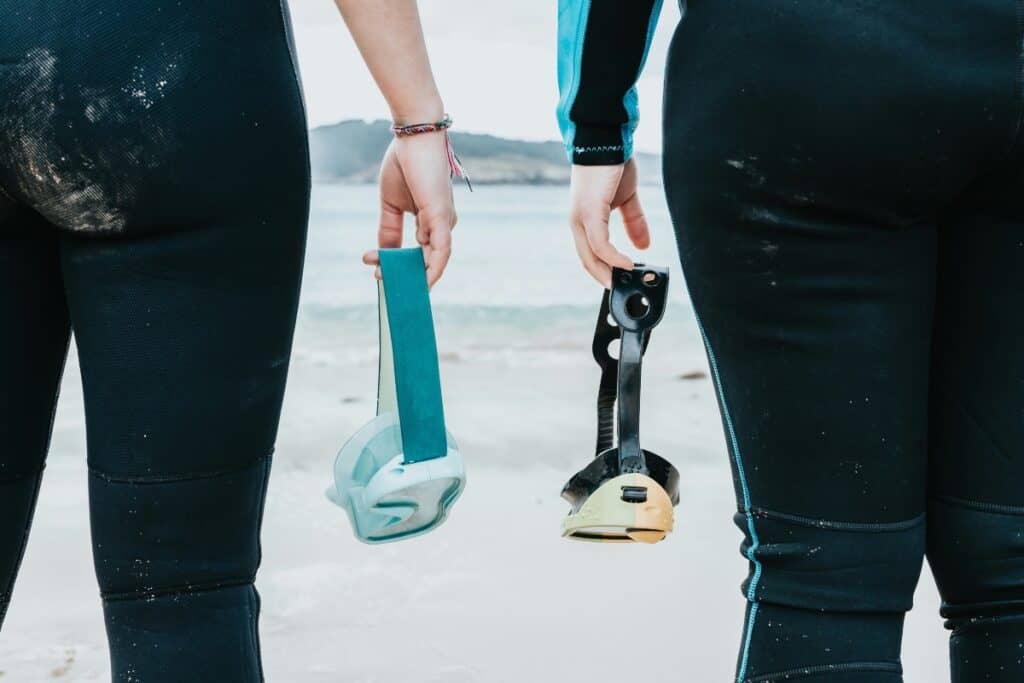
Why It’s Important to Wear the Right Thing Under a Wetsuit
The layer between you and your wetsuit isn’t just for modesty. It plays a big role in comfort, performance, and even hygiene. Here’s why it matters:
✔️ Comfort and Flexibility
A wetsuit fits like a second skin (and sometimes even tighter). Wearing the right underlayer minimizes chafing and ensures you’re not constantly adjusting during your water adventures.
✔️ Warmth and Insulation
Especially in colder waters, adding thermal layers can keep you toasty and extend your time underwater. (Nothing kills the vibe faster than uncontrollable shivering during a dive.)
✔️ Hygiene and Skin Protection
A wetsuit traps moisture, which can create a breeding ground for bacteria. Wearing something underneath acts as a barrier and helps protect your skin.
✔️ Confidence and Modesty
If your wetsuit rips—and yes, it happens—you’ll be very glad you wore something underneath. A sudden wetsuit malfunction mid-dive (ahem) can lead to an unforgettable “peekaboo moment.”
Trust me, your dive buddies won’t let you live it down anytime soon. Better to play it safe and keep those unexpected exposures to a minimum.

Seasonal and Activity-Based Recommendations
Your choice of undergarments depends heavily on the season and activity.
Winter and Cold Waters
When diving in chilly waters, layering is everything.
- Thermal rash vests and neoprene base layers keep your core warm.
- Don’t forget accessories like wetsuit hoods, gloves, and boots for full-body protection.
- PRO TIP: Always check the water temperature before your dive. If it’s below 60°F (15°C), thermal layers are non-negotiable.
Summer and Warm Waters
In tropical conditions, you can keep it light.
- Swimwear and rash guards are ideal.
- Thin neoprene shorts prevent the wetsuit from sticking.
- PRO TIP: Opt for UV-protective rash guards to double as sun protection when you’re out of the water.
Activity-Specific Choices
- For scuba diving, prioritize warmth and flexibility.
- For surfing, focus on anti-chafe layers that allow for quick movements.
- For snorkeling, lightweight swimwear is usually sufficient.
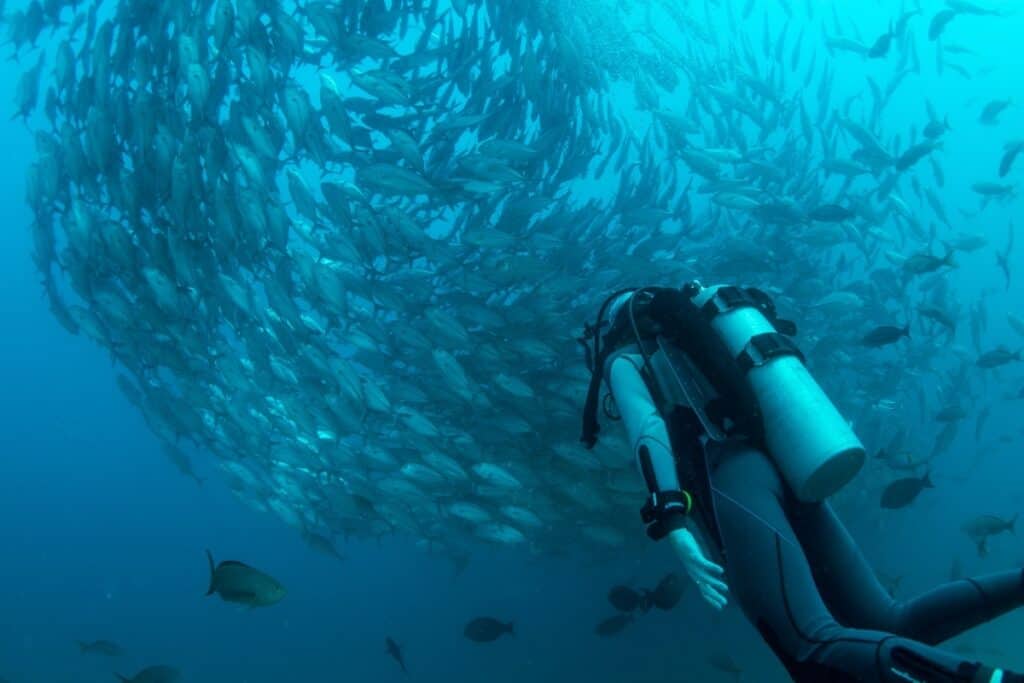
Factors to Consider When Choosing What to Wear Under a Wetsuit
To make the best choice, consider these factors:
- Water Temperature and Weather Conditions: Your gear should match the environment.
- Activity Duration and Intensity: Longer sessions may call for more comfortable layers.
- Personal Comfort and Body Sensitivity: If you’re prone to chafing, a rash guard is your best friend.
- Modesty and Practicality: Always plan for worst-case scenarios, like a wardrobe malfunction.
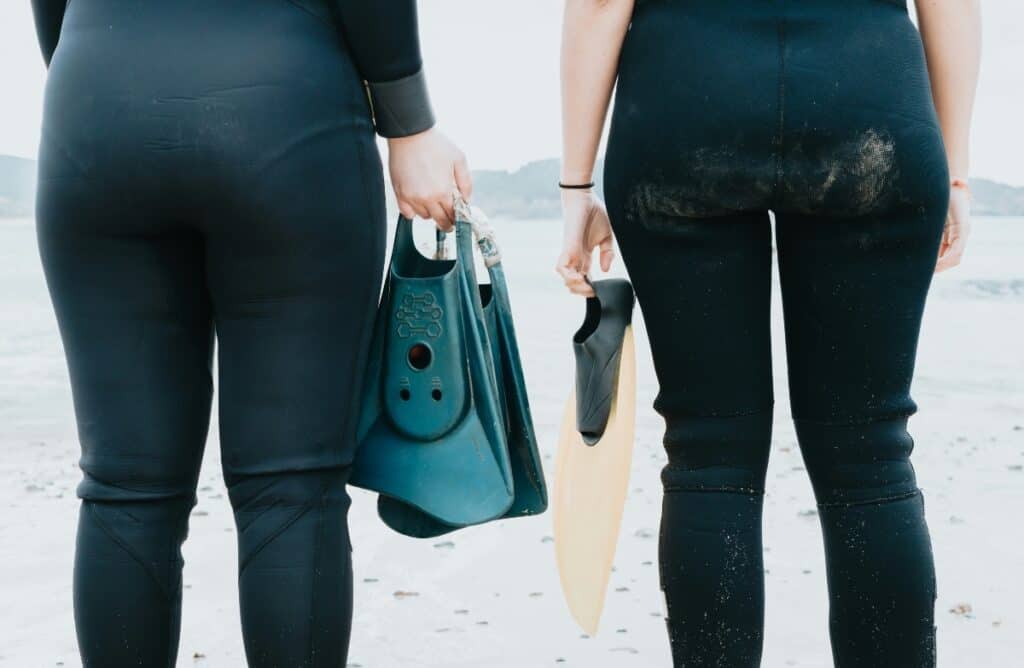
Common Mistakes to Avoid (And How to Laugh About Them Later)
Even seasoned adventurers can have a “What was I thinking?” moment. Here are some common slip-ups to dodge—unless you enjoy telling cringe-worthy dive stories.
‼️ Wearing Cotton: Cotton may be your go-to on land, but underwater, it turns into a soggy, chafing nightmare. It absorbs water like a sponge and stays wet forever, leaving you cold, cranky, and questioning your life choices.
Tip: Save the cotton for the après-dive coffee shop, not the dive itself.
‼️ Overlayering: Piling on too many layers might seem like a good idea—until you realize you’ve transformed into a neoprene-clad marshmallow. Restricted movement and overheating are the inevitable results, and trust me, sweating inside a wetsuit is a sensation no one wants.
‼️ Ignoring Fit: Loose or bunching fabrics can make you feel like you’re fighting an underwater octopus. Distractions like these are not what you want when you’re trying to focus on the wonders of the ocean (or avoid bumping into a jellyfish).
Lesson learned: If it doesn’t fit well on land, it won’t magically feel better in the water.
PRO TIP: Always do a test run with your undergarments and wetsuit at home before your first outing. You don’t want your first dive to turn into a public demonstration of the “wetsuit wiggle dance.”
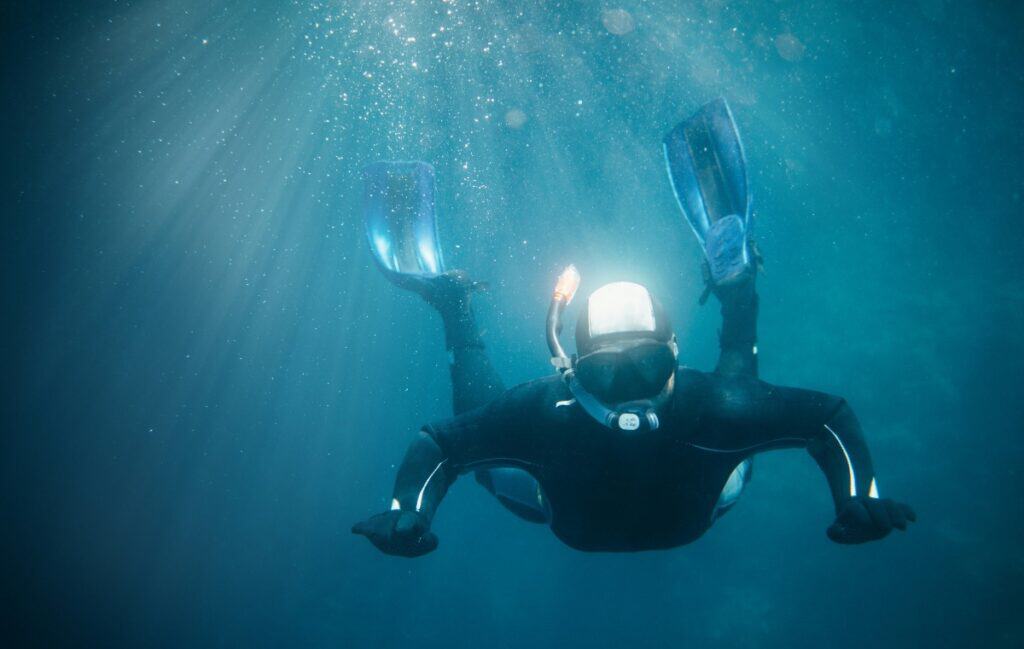
Additional Accessories to Enhance Comfort
Sometimes, it’s the little things that make a big difference:
👉 Wetsuit Socks or Boots: Protect your feet and make slipping into the wetsuit easier.
👉 Neoprene Gloves: Keep your hands warm and protected, especially in colder waters.
👉 Quick-Dry Poncho: My absolute must-have for any scuba diving trip! This is like my portable changing cabin—I can dry off and slip into normal clothes in just a few minutes without any awkward moments on a boat full of new dive buddies. It keeps me warm, dry, and, most importantly, covered.
This quick-dry microfiber poncho is lightweight, super absorbent, and perfect for discreet and hassle-free outfit changes.
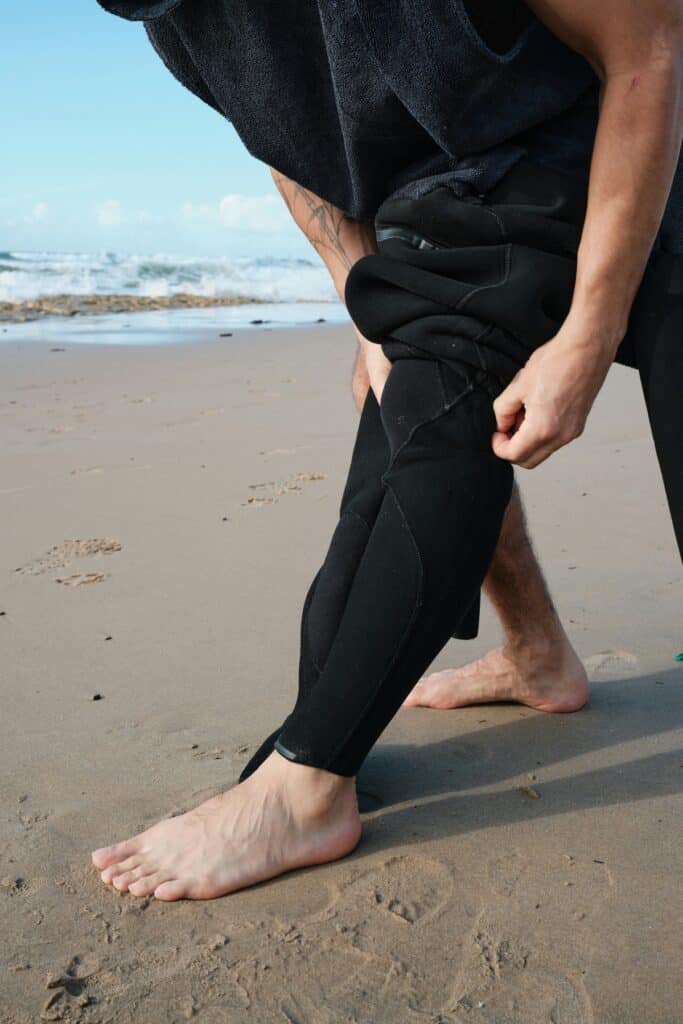
Caring for Your Wetsuit and Undergarments
Taking care of your gear isn’t just about keeping it clean—it’s about making sure it lasts dive after dive while staying fresh and comfortable. Here’s how to show your wetsuit some love:
✅ Rinse and Dry: After each use, rinse your wetsuit thoroughly with fresh water to remove salt, chlorine, or debris. Hang it in a shaded area to dry completely—direct sunlight can cause neoprene to degrade over time.
✅ Proper Storage: Store your wetsuit flat or on a wide hanger to avoid creases or permanent folds. A crumpled wetsuit doesn’t just look bad—it can compromise its fit and performance.
✅ Preventing Odors: Keep your wetsuit fresh and bacteria-free by using wetsuit shampoo or anti-bacterial sprays. These products remove unpleasant smells and help maintain the neoprene’s flexibility and softness.
PRO TIP: Invest in a portable wetsuit hanger for drying your wetsuit on the go. It’s compact and practical and ensures your wetsuit stays in top shape no matter where your adventures take you.
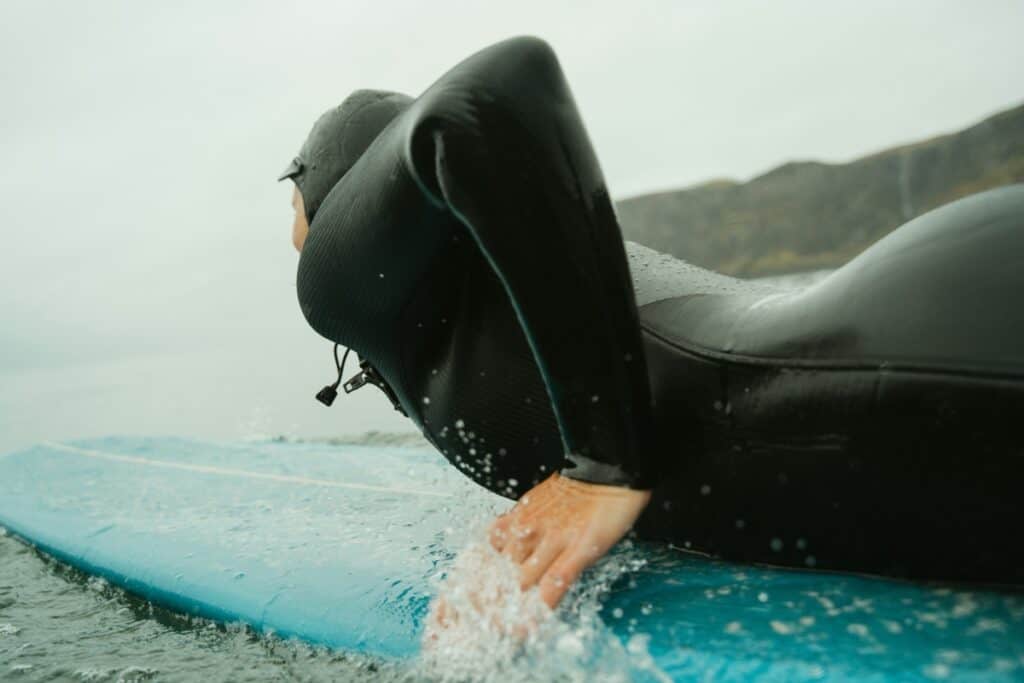
FAQs About Wearing Items Under a Wetsuit
You’ve got questions, and I’ve got answers—plus a little humor to keep things light.
Should you wear underwear under a wetsuit?
You can, but make sure it’s quick-dry or seamless. Nobody wants soggy undies ruining the vibe or seams, leaving you with awkward tan lines.
Is it okay to wear a bra under a wetsuit?
Absolutely, as long as it’s a sports bra made of quick-drying material. But if you’re rocking a cotton bra, that’s a hard no. Cotton and wetsuits mix about, as well as flip-flops and snowstorms.
Do You Need Thermal Layers in Warm Water?
Not usually, unless you’re someone who feels cold when the air conditioning’s on. It’s totally a personal preference—if you’re shivering in 27°C/80°F water, a thermal layer might be your new best friend.
Is It Safe to Go Commando?
Sure, as long as it’s your wetsuit and you’re comfortable with the idea. If it’s a rental, it’s best to skip it—let’s keep things clean and considerate. After all, a little extra effort goes a long way in making everyone’s diving experience more enjoyable! 🌊

The Wrap-Up: Find Your Perfect Fit for Any Water Adventure
The right undergarments can truly elevate your water experience from “meh” to “amazing.” Comfort and performance begin with what you wear under your wetsuit—get this part right, and everything else will fall into place. Take the time to test different options and figure out what works best for you, because the last thing you want is a wardrobe mishap or discomfort distracting you from the magic of being underwater.
And while you’re enjoying those aquatic adventures, remember that the ocean is more than just your playground—it’s a home to countless marine species. Practicing good conservation habits, like avoiding single-use plastics and choosing eco-friendly dive gear, is key to preserving these underwater ecosystems for future generations. To dive deeper into this topic, check out my post on Sustainable Diving: Why It’s The Ultimate Path Forward and learn how small changes can make a big impact.
So, pack wisely, choose thoughtfully, and make the most of every dive, paddle, or snorkel session. And hey, if you’re feeling confident in your gear, you might even pull off the wetsuit shimmy with style. Enjoy every moment and keep exploring! 🌊


